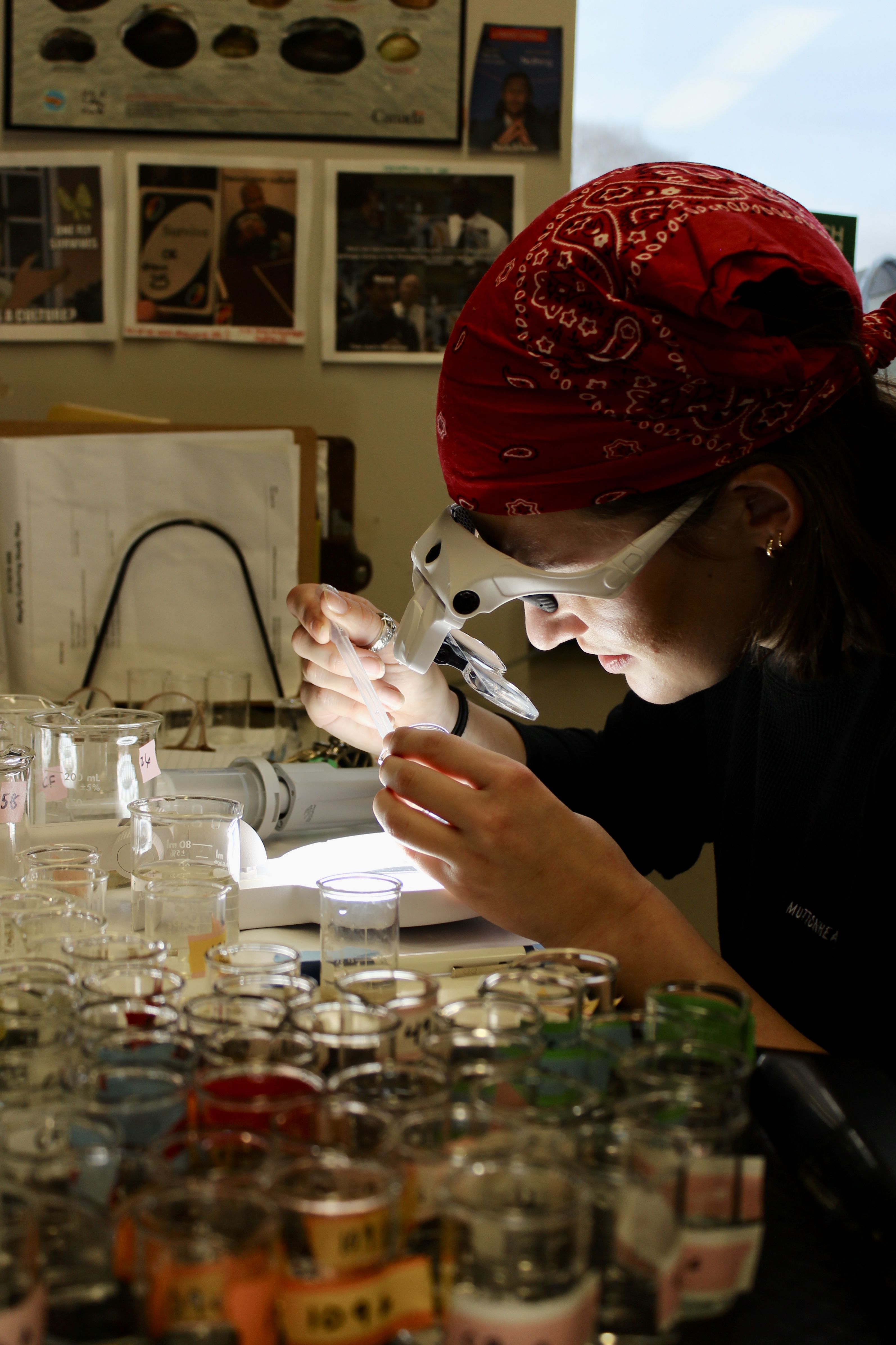In this photo, I am assessing mayfly survival when exposed to pesticide-contaminated periphyton. In each beaker there were 10 mayflies, and everyday I gently probe them to see if they are still alive. The insects are so small (about the size of a grain of sand) so I need to wear jewellers glasses to locate them. We don't know if pesticides are toxic when they contaminate periphyton and are consumed by aquatic organisms. In this study, we observed reduced mayfly survival and lower growth rates when mayflys consumed pesticide-contaminated periphyton.
